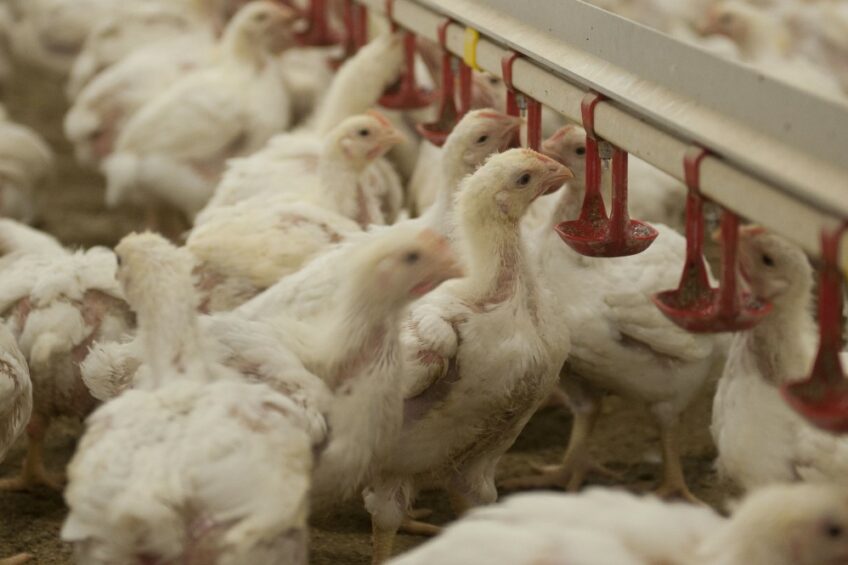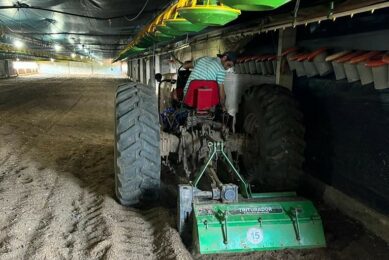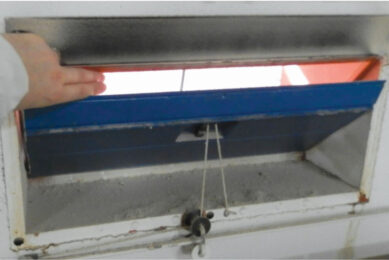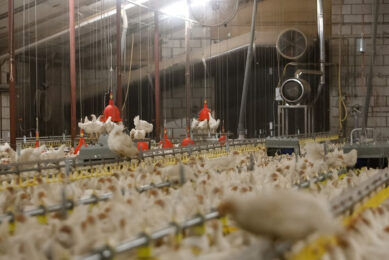Spotlight on ammonia reduction strategies for poultry producers

Good ventilation, litter and manure management protocols are key to reducing ammonia emissions in the poultry sector.
On the back of a 3-year European Innovation Partnership (EIP) trial on 2 Welsh broiler farms, Jason Gittins, technical director for livestock at ADAS, said it was imperative to drive down ammonia levels, which accounted for 87% of UK emissions in 2019, of which 14% came from poultry production.
Poorly ventilated sheds will result in wet litter, said Gittins, which allows more ammonia to be released into the air. The use of effective ventilation to optimise the in-house environment, and prevent condensation, can increase litter dry matter content and reduce ammonia emissions.
Indirect heating systems heat the shed without the additional carbon dioxide and water vapour produced by direct gas heating systems: “As a result, litter condition is often drier, which makes conditions less favourable for the production of ammonia.”
While ammonia scrubbing systems can reduce ammonia emissions by 80% by passing exhaust air through a liquid to capture the ammonia, capital and operating costs are high, he said.
Gittens advises that diets should be formulated based on amino acid requirements rather than crude protein. “Diet formulation should change throughout the flock cycle to ensure that the nutrient supply is closely matched to the birds’ ammonia acid and other nutrient requirements.”
Improvements in feed utilisation and feed conversion ratio provide both environmental and financial benefits.
Manure
Manure should be contained in covered stores or impermeable surfaces. If field heaps are used, the surface area should be as small as possible: “dddddddd, as this will reduce emissions. A key issue is that wet poultry manure and litter can lead to higher emissions of ammonia and so the priority is to keep them as dry as possible, both during the housing and afterwards. This can also increase its value per tonne as a fertiliser and reduce haulage costs and odour risks.”
Manure applications should follow normal good practice, adding that this should not occur during frost, snow or heavy rain and liquid organic manures should be spread using precision technology.
In free-range egg production, the move to multi-tier systems is consistent with reducing ammonia, because of belt clean-out and frequent manure removal.
Drinkers
Drinkers should be managed to prevent spillages – any leaks need to be identified and quickly resolved: “Nipple drinker systems should be adopted, as these allow better management of water intake and reduce water usage.”
The trial, which specifically looked at the role additives may play in reducing emissions by improving gut health and flock performance, produced no evidence that these were effective for this purpose – similar levels of ammonia were recorded in the control and treatment houses.
 Beheer
Beheer











 WP Admin
WP Admin  Bewerk bericht
Bewerk bericht